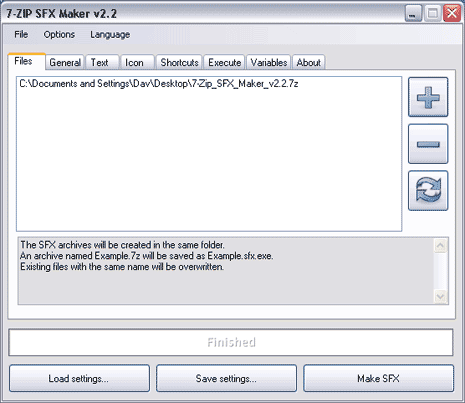
Also, you can view the original as well as the new size of the archive to get a better view on the amount of disk space saved. Once the task is completed, you receive a popup message that notifies you whether or not the process is successful. Thus, you can check the archived file, set the priority level (normal, idle, high or realtime), specify the output format, input a password (if the file is encrypted), update the check and initiate the conversion process. You can open an archive by using the file browser or the "drag and drop" method. The user interface of the program consists of a standard window in which you have limited options. Since it is portable, you can place ArcConvert on an external device and directly run the executable file on any computer. Also, your Windows registry entries will remain intact. The software doesn't require any installation. Luckily, applications like ArcConvert allow you to convert archives between several formats, including ZIP, 7ZIP, CAB, TAR, BZA and ARJ. config=FILE load configuration defaults from fileĪrchive format (for -format) may be specified either as aįile extension ("tar.gz") or as "tar+gzip".Even though most compression tools are compatible with nearly all available archive formats, circumstances might require a particular one.

o, -option=KEY=VALUE override a configuration option S, -simulate simulation mode - no filesystem changes are made E, -explain explain what is being done by atool 0, -null filenames from standard in are null-byte separated V, -verbosity=LEVEL specify verbosity (0, 1 or 2) v, -verbose increase verbosity level by one q, -quiet decrease verbosity level by one f, -force allow overwriting of local files D, -subdir always create subdirectory when extracting O, -format-option=OPT give specific options to the archiver

F, -format=EXT override archive format (see below) e, -each execute command above for each file specified You'll still need to delete the *.zip files, but that can be done simply like so: $ rm -f *.zip Once this is available you can simply do this: $ arepack -e -F 7z *.zip It's typically a yum install atool or apt-get install atool to install it. You could also simply use the arepack tool that's part of the atool suite of tools.


 0 kommentar(er)
0 kommentar(er)
